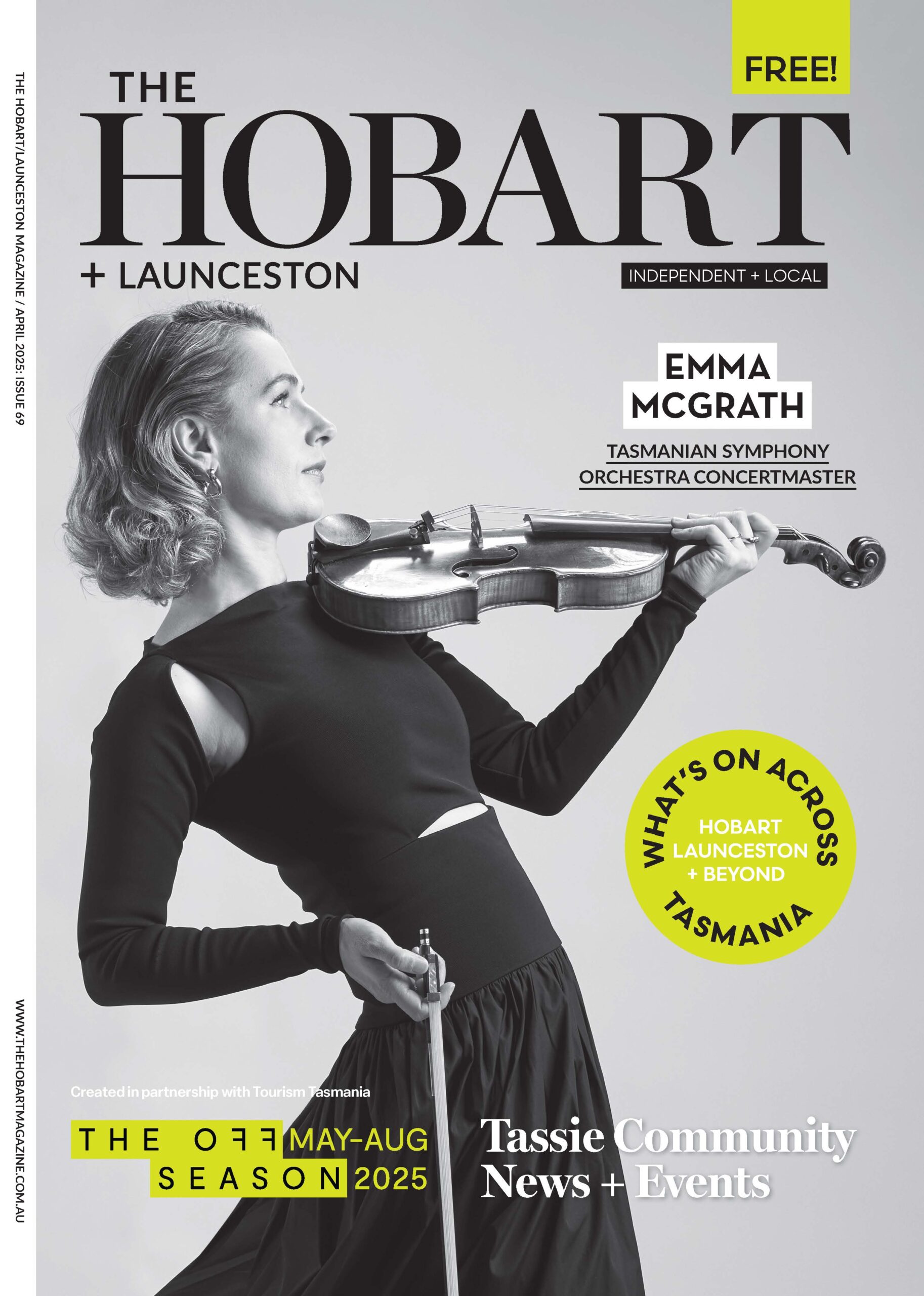Madame Saisons: The Subtle Art Of Christmas Feasting
by Sarah Ugazio

Unless you’ve gone to the trouble of fattening up a fowl yourself, you may be gobble-smacked to know procuring a Tasmanian turkey is off the menu, literally.
We simply don’t commercially farm or process them – chicken, duck and quail are the only locally-bred poultry products available. If you want to stick to the custom Christmas bird, it will have to fly in from afar; and, no, not of its own accord. Many won’t mind stuffing a mainlander, but in our sustainable age of minding food miles maybe it’s time to re-think traditions?
While we feel attached to time-honoured customs, it’s interesting to note turkey hasn’t always played centre stage on the Christmas table. Once upon a few centuries ago, uber wealthy Brits would likely have feasted on glazed boars’ head, or even peacock or swan, feathers reattached post-roast. Albeit visually spectacular, somehow a culinary comeback for these delicacies seems unlikely, and telling that traditions do change with time.
Holiday traditions can seem sacred, however we shouldn’t fear doing things differently. Consciously creating new traditions can be a fabulous exercise in contemplating our core values and what’s important.
Valuing our environment, and appreciating our island bounty, could indeed be reflected by sourcing local sustainable Tassie delicacies. Say, roast duck or heritage breed pork. Much like the traditional French Christmas feast, a sensational seafood focus could be your thing, including local rock lobster, oysters or a side of wild salmon spiced with pepper berry.
Another core value could be caring for loved ones and general inclusiveness; such as catering for our vegan friend – we’ve all got one (or more)! Holiday lashings of seafood, meats, and pav (remember veganism means no eggs or butter) generally limits them to boring side greens. Aside from an interesting array of salads, consider adding a hearty main option such as Nutloaf garnished with holly; or a spinach, mushroom and tofu puff pastry wreath (margarine based not butter). ■
VEGAN FRIENDLY PAVLOVA WREATH
Serves 10
INGREDIENTS
- 2 x 400g Canned chickpeas
- ¼ tsp Cream of tartar
- 250g Sifted pure icing sugar
- 200g Caster sugar
- 2 Tbls Corn flour
- 1 tsp Vanilla extract or paste (not essence)
METHOD
- Strain the chickpeas and reserve the liquid (this is called ‘aquafaba’)
- In a saucepan, slowly simmer the aquafaba until reduced by half. Store in an airtight container and chill in the fridge overnight.
- Preheat your oven to 180C (or 160C fan forced)
- Draw a 20cm circle on baking paper, and a smaller 5-8cm circle inside the bigger circle, then place drawn side down on a baking tray (as large as possible as mixture does spread)
- Mix all the dry ingredients together
- Place aquafaba into a stand mixer bowl and mix on high for 1 min
- Turn the mixer to medium and slowly add the dry ingredients, one tablespoon at a time every 15 secs (will take around 6 mins – patience!)
- Add vanilla then turn mixer up high again for 2 mins until meringue is glossy
- Gently spoon onto the baking paper, in between the circle guides. Do not pile meringue too high (approx 1inch high max). You will have a lot leftover to make meringue kisses which you can pipe on a separate baking paper lined tray
- Pop in the oven and immediately turn down the temperature to 100degs
- Bake for 1 ¾ hours – do not open the oven at any stage
- Let the pavlova cool completely in the oven (ideally overnight with door slightly ajar) before removing
- Slide baking paper onto a platter and decorate. Baking paper can be trimmed once on platter.
- Serve with Coconut Whipped Cream (recipe @madamesaisons) and your choice of topping (fruit, coulis, chopped nuts, or toasted coconut curls, etc)
Follow Sarah on Instagram at @madamesaisons

